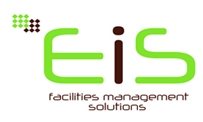How can you reduce the risk of carbon monoxide poisoning?

A lot of effort has been put in to raising people’s awareness of the risks of carbon monoxide (CO) in their own home. But the dangers from CO aren’t just limited to the home; they can also pose considerable risks in the workplace and in commercial premises, including residential premises, and it’s vital they are recognised and addressed there too.
What is carbon monoxide?
Carbon monoxide is a colourless, odourless and highly toxic gas. It’s created when fuels that contain carbon (like gas, oil, coal or wood) burn incompletely due to a lack of oxygen. While it can be accidentally created it’s also used in industry particularly in chemical manufacturing.
Exposure to carbon monoxide reduces the oxygen-carrying capacity of the blood which in turn reduces the availability of oxygen to the body. But the symptoms of CO poisoning are very easy to mistake for something else – they can include nausea, dizziness, tiredness, severe headaches and chest pains.
Sadly there have been deaths in workplaces as a result of carbon monoxide poisoning and even if CO doesn’t kill, it still has the capacity to make people very unwell. Sometimes there are incidents where its presence is detected before it harms anyone but even so, these incidents are reminders that no one can afford to be complacent about the dangers of carbon monoxide.
In fact, several thousand people a year go to accident and emergency departments suffering from carbon monoxide poisoning. Those who survive exposure to it are often left coping with long term consequences that can include heart problems and brain damage.
What can you do to reduce the risk of carbon monoxide poisoning?
There are several things you should do to reduce the risk of exposure in your workplace or in the buildings you are responsible for.
Identify any equipment, tools or appliances that produce carbon monoxide. Make sure they are installed and maintained by a registered competent individual or company. For example, if someone is working on gas installations or appliances in your building, check to make sure they are on the Gas Safe Register and are authorised to work on the types of appliances and equipment you have. You could also consider switching to safe alternatives that don’t produce carbon monoxide.
Ensure you have effective ventilation in all areas. Never use petrol or diesel powered engines or tools inside buildings or in partially enclosed areas unless you have had an effective ventilation system installed and the engine is well away from any air intakes or vents. Make sure anyone who will be using the equipment has been trained and fully understands all the dangers posed by CO. And provide all necessary personal protective equipment for anybody who has to carry out work in an area where there could be carbon monoxide.
While CO alarms and monitors should not be used as alternatives to safe systems of work, and the maintenance and safe use of equipment, they provide a useful additional level of protection too.
What should you do if you believe someone has CO poisoning?
First of all, you must make sure it’s safe for you to enter the area – it could take a very short amount of time for you to be affected too. Move them out of the affected area and get them into fresh air as fast as you can. If you have access to pure oxygen, give it to them and call for emergency medical help straight away.
Every workplace and building is different in terms of the risks they present, so if you think you could benefit from some more specific guidance about the risks carbon monoxide could pose, please do Contact Us.
